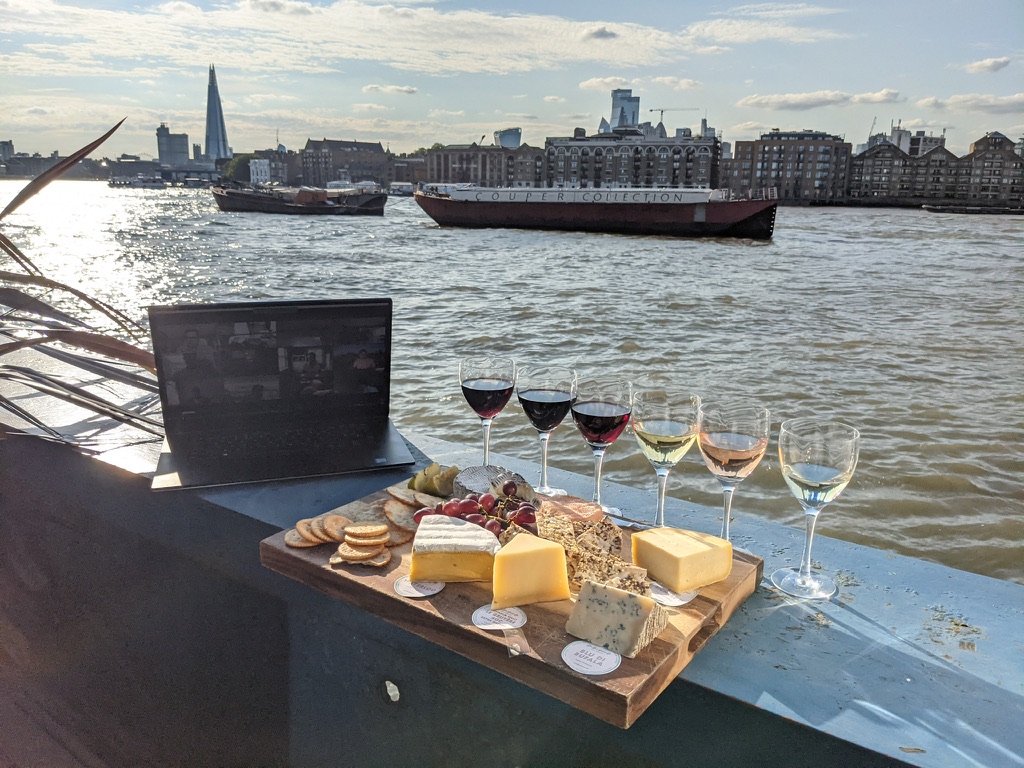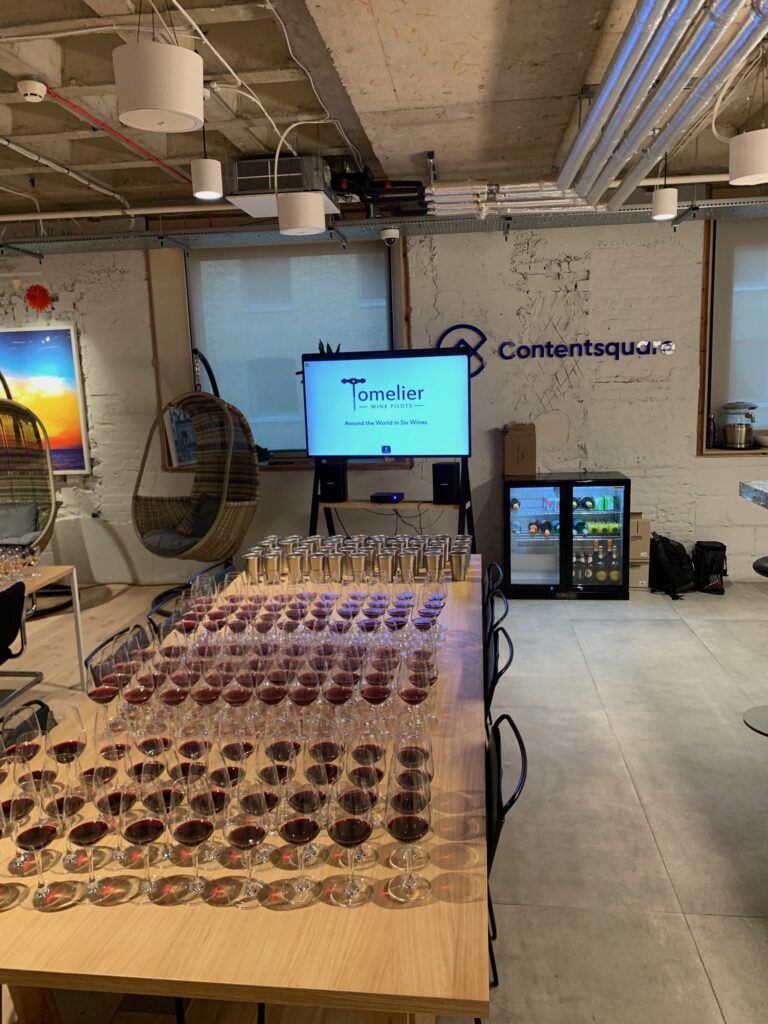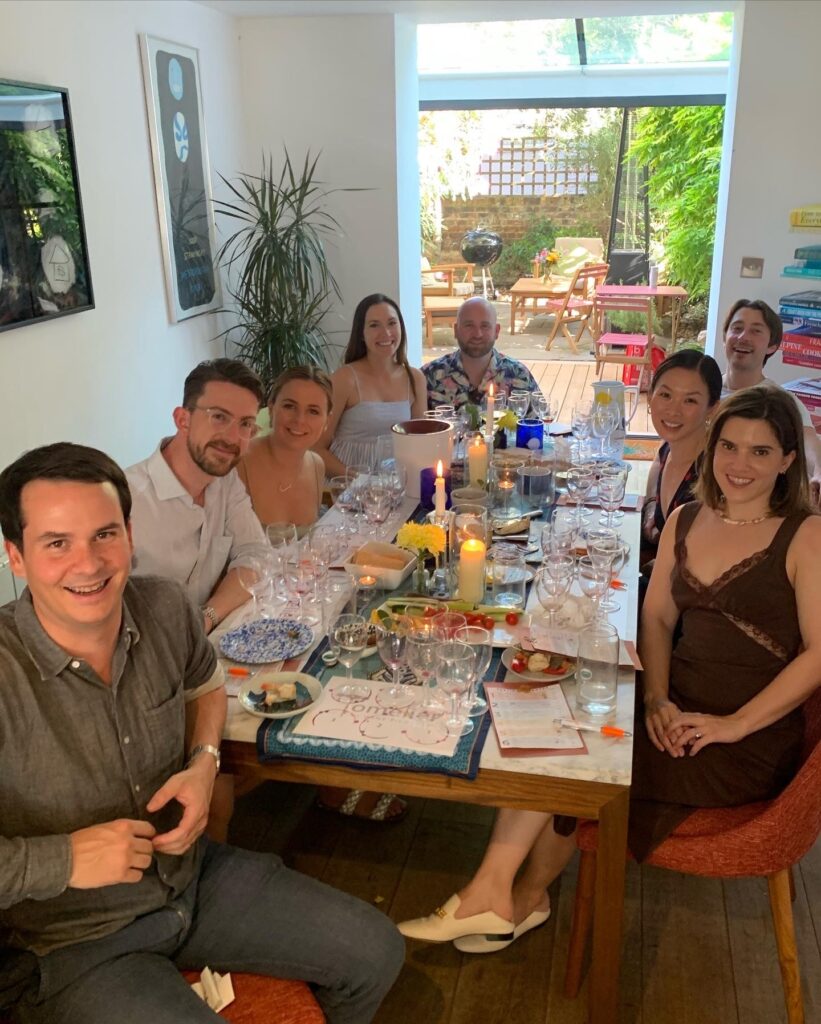Why do we taste wine?
Tasting wine at home is a fun, relaxing experience you can share with friends and family. Tasting wine as a job is much more taxing than you might think, with lots of things to bear in mind and remember (although it’s still a fantastic job!)
Tasting wine on a basic level helps us work out what we like and what we should be spending our money on. The faster way to understand what you like is to taste and try lots of wines. You don’t need a super palate and there’s no need to make pages of notes, or have an encyclopaedic memory of vintages, unless of course you want to!
The tasting experience with Tomelier is all about making sure you enjoy yourself, maybe learn a little, and leave the experience more comfortable around wine than before.
How to taste wine
There is a certain structure to tasting wine ‘properly’. If you were to follow the WSET (Wines and Spirits Education Trust) guidelines you’d consider how the wine looked, how it smelt, how it tasted, and how long the aftertaste stuck around for. All whilst considering region, country, wine-making processes, grapes used, maturation, and all the rest of the nitty gritty.
A Tomelier wine tasting will be more relaxed focusing mainly on smell and taste. The colour of a wine will always attract some drinkers, but you’d rarely be considering using the colour of your Rioja at home to help you guess its age when you have the bottle in front of you!
Wine smells
A wine’s aroma (and flavour) can be divided into three categories.
- Primary aromas – The aroma of the liquid – determined by the grapes used.
- Secondary aromas – The aromas caused by the winemaking process, for example the use of oak barrels will impart distinctive aromas and flavours into the wine.
- Tertiary aromas – Aromas caused by the ageing of the wine oaked or unoaked.
Unfortunately there can sometimes be a fourth category; aromas caused by a fault in the wine.
Wine grapes and aromas
Not all grapes are used to make wines. The most common grapes you’ll find in supermarkets belong to a group called the ‘Noble’ varieties. There are 18 of these ‘noble’ grapes and you’ll recognise most of them. The top four are Chardonnay, Cabernet Sauvignon, Merlot, and Sauvignon Blanc.
Each grape has a ‘flavour profile’. This is a set of colours, aromas, and flavours that are regularly attributed to them. A good example is Cabernet Sauvignon smelling like blackcurrant, or Sauvignon Blanc smelling like elderflowers.
An experienced taster will have a ‘bank’ of these flavour profiles memorised to help them identify wines when tasting ‘blind’ – tasting a wine without knowing what it is in advance.
Wine bottle closures and ageing
Most wines come in glass bottles and are still closed with corks or screwcaps. Although more alternative closures are being used all the time, like synthetic corks, plastic, and glass. A wine’s closure can give you a clue about what the winemaker has in mind for the wine. A screwcap, for example, does not allow the wine to develop over time like a cork does. Corks allow tiny amounts of oxygen in and out of a bottle, helping to age the wine and change its taste. Age will also affect the colour of a wine. Reds and rosés get lighter, and the colour of white wine deepens.
Getting nerdy about wine closure is not for everyone, so we’ll leave that there – if you’re interested in learning more about it feel free to ask during a tasting and if you’re interested in discovering alternatives to glass bottles, click here to see me talking about bag in box wine.
How to tell if a wine is faulty
There’s a lot said on this subject but the simplest answer is, you’ll know. Sure, there are some wines that are deliberately made to have some ‘funk’ through various winemaking processes which may lead to an odd aroma – but the major wine faults are so obvious you’d know immediately if a wine was off.
In simplest terms, if your wine smells damp, mouldy, like nail polish, like wet cardboard it is likely faulty. Each wine fault has it’s own tell-tale smell, but that’s irrelevant to the every day drinker.
There can be several reasons for a wine becoming faulty, but normally it comes down to bad storage!
What glass should I use to taste wine?
There are dozens of wine glasses available on the market often purporting to be best for certain styles of wine or even grapes and it is true that the glass you use can have a huge impact on the wine you’re drinking. Having said that, most of the top wine tasting competitions, like the DWWA (Decanter World Wine Awards) use a single wine to taste all wines except Champagne. The DWWA uses Riedel’s Riesling glass as a great ‘all-rounder’.
Another tasting glass often used in competition is referred to as an ISO glass. This is the same ISO you may have come across at work regarding ISO 9000 regulation. These glasses are shorter than the average wine glass with a wide bowl and narrow rim. They’re often used in wineries, on winery tours, and at vineyards and is my preferred tasting glass.
For a Tomelier wine tasting we use the same type of simple wine glass for each sample that you will try. If you’re stuck at home with a collection of wine glasses made up of the survivors of several sets that have been dropped or ‘dishwashered’ to death over the years that’s fine. A great all round option is a white wine glass with a wide bowl and a rim that tapers inwards but it still big enough to get your nose into.
All that being said, some of the best wine experiences that I have had involve drinking wine out of mugs or plastic glasses! The whole tasting experience is much more than having the correct glass!

Why should I swirl my wine?
Swirling wine in the glass helps to introduce oxygen to the wine and help it ‘open up’. You’re agitating the wine in the glass and allowing the aroma to fill the glass.
Here’s the geeky part; the aroma compounds in the wine are all a different mass, depending on their molecular structure (bear with me). Some ‘smells’ are heavier than others and will settle and ‘layer’ in the glass to give you the full aromas. They need a bit of help moving around in order to do this, having been tightly packed into the bottle for a while.
If you try and picture this as a fancy layered cocktail with each different coloured element resting on top of the other. Imagine each layer of compound or ‘smell’ is taking up a horizontal strip of the bowl in your glass. Heaviest at the bottom through to the lightest at the top. As you swirl, the aroma molecules “bind” onto the oxygen in the air which make them easier to smell.
It should only take a few swirls to see the benefit of swirling. Next time you open up a bottle try pouring very slowly and carefully into your glass immediately and seeing what you can smell. Then give it a vigorous swirl 5 or 6 times and smell again. You’ll be amazed at the change!
Why do people slurp their wine?
The odd sucking, slurping noise that some people make when they’re tasting wine is an extension of the swirling mentioned above. It’s a mechanism for adding more oxygen to the wine and to help the smells and flavour travel around the taster’s olfactory system. This is the system responsible for our sense of smell. It includes our nose as well as nasal cavities above our soft palate.
Don’t worry we don’t make you do this on a Tomelier tasting, it can lead to dribbling if you aren’t careful!
So, what does wine taste like?
This is an interesting question with more than one answer. Cabernet Sauvignon, as mentioned earlier, is famous for smelling and tasting like blackcurrant. Gewurztraminer (say ‘Gih-vurtz-tram-inner’) shares an aroma compound with lychees so smells and tastes exactly like lychee (along with some other bits and pieces).
Going back to the ‘flavour profiles’ also mentioned earlier – each grape, and each wine will taste slightly different. There will also be the influence of the environment the vineyard is in, the winemaking processes, and several other factors. Experienced tasters can spend years committing these elements to memory and testing themselves continually with new wines. So you could argue that every wine taste is catalogued and ‘set in stone’.
Or, you could consider the other side of the coin. Taste is a very subjective experience and everyone will have a slightly different interpretation of flavour. You could argue that the best you can do is to say what a wine tastes like to you through the prism of your own experiences and memory of similar flavours.
In the case of certain grapes like Gewurztraminer it’s easy – it tastes like lychees because the thing that makes lychees taste like lychees is, chemically, part of that grape.
But if you taste loads of red fruits – redcurrants, red cherry, strawberries and raspberries – in a Bordeaux blend primarily made up of Cabernet Sauvignon that ‘should’ taste like blackcurrant, blackberry, plum, and vanilla then so be it!
Wine is meant to be enjoyed. So make sure that’s your first concern.
How do I book a home wine tasting?
Home wine tastings are a lot of fun, easy to arrange, and offer something a little different to do from the comfort of your own home.
Our tastings are never a sales exercise. We choose wine based on your brief and your budget to create a better experience of home tasting. One that is relaxed, informative, and fun.
If you’d like to book yours now click here.
Can I book a corporate wine tasting?
Absolutely.
Having worked in the corporate world we understand that sometimes you will want to treat your clients or have some downtime with your team.
A wine tasting is a great activity to help create a bonded and motivated team and can be a novel and eye catching way of marketing products and services to your client.
We can run an event virtually, come to your place of work or arrange an alternative location should that be your preference.
We work closely with conference centres so if you have an away day planned and are looking for some much needed downtime at the end of the day, let us know and we can work with your existing arrangements. To find out more please get in touch here.


